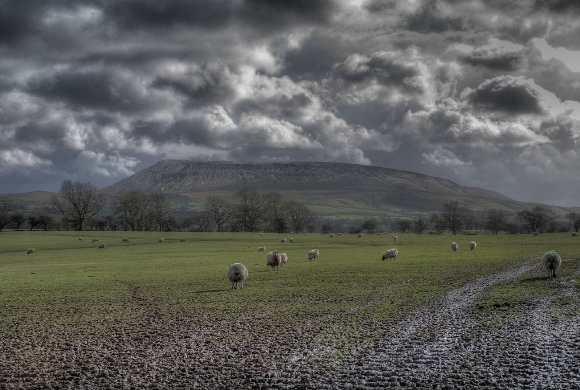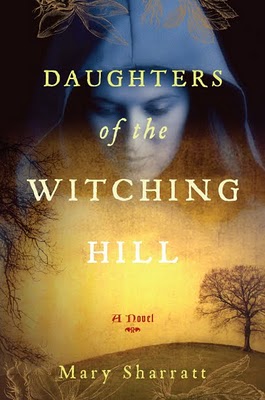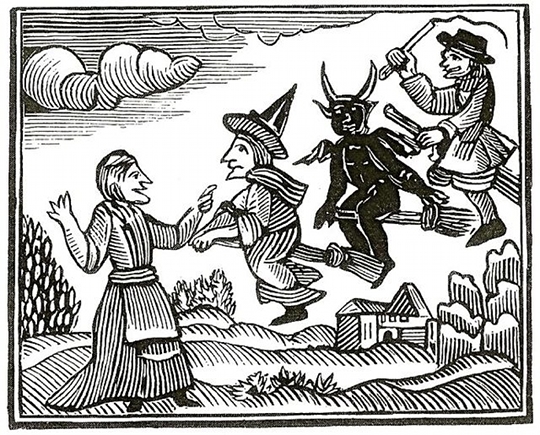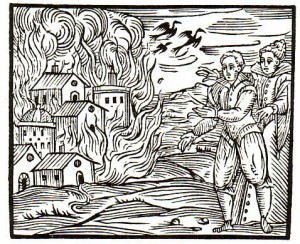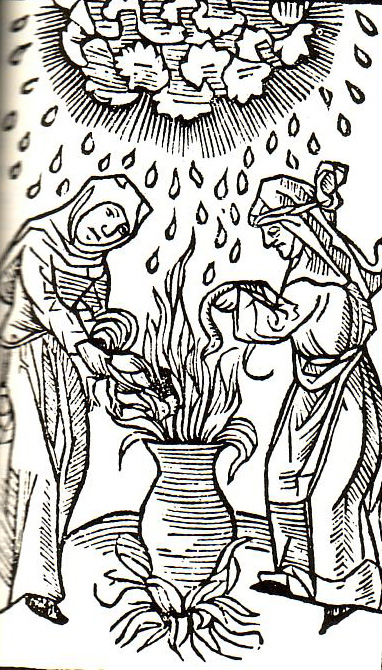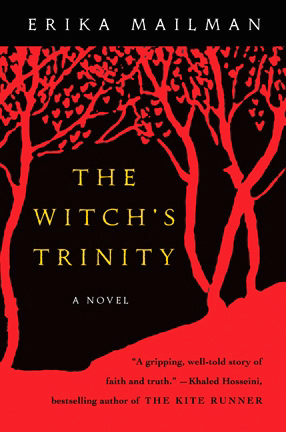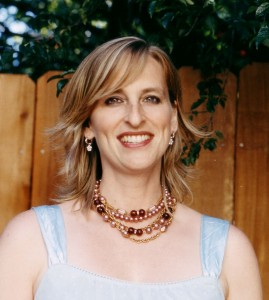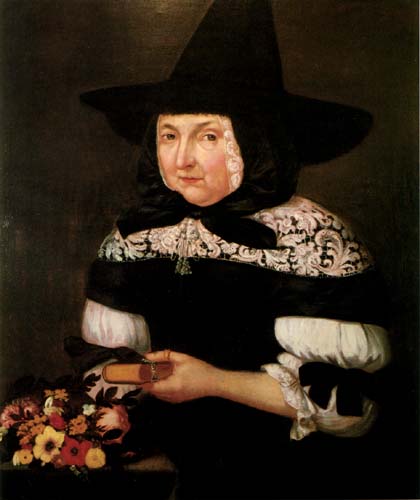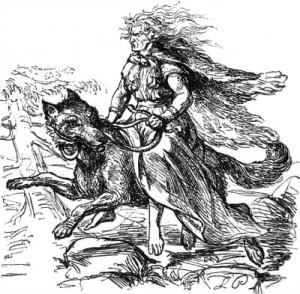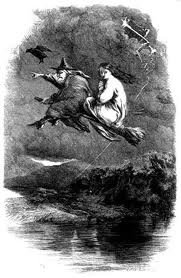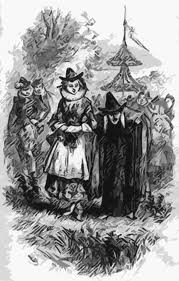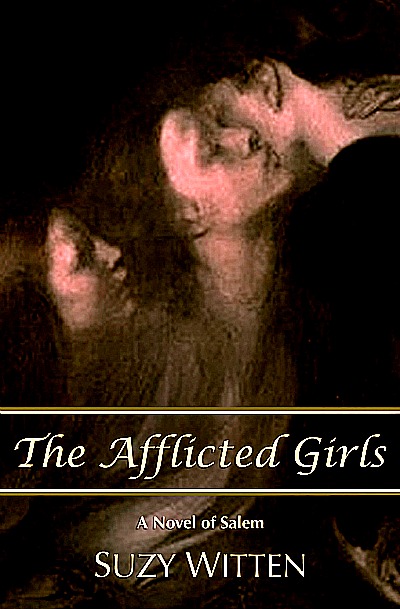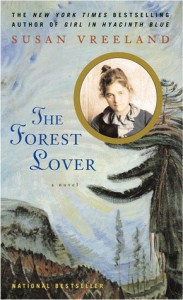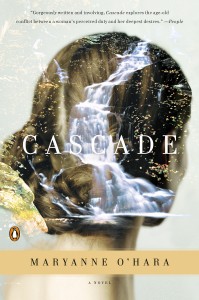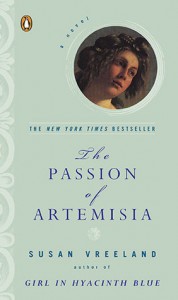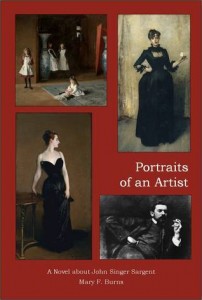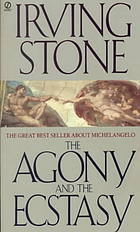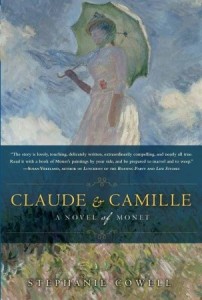Guest blog post by author MARY SHARRATT
Come Halloween, the popular imagination turns to witches. Especially in Pendle Witch Country, the rugged Pennine landscape surrounding Pendle Hill, once home to twelve individuals arrested for witchcraft in 1612. The most notorious was Elizabeth Southerns, alias Old Demdike, cunning woman of long-standing repute and the heroine of my novel Daughters of the Witching Hill.
How did these historical cunning folk celebrate All Hallows Eve?
All Hallows has its roots in the ancient feast of Samhain, which marked the end of the pastoral year and was considered particularly numinous, a time when the faery folk and the spirits of the dead roved abroad. Many of these beliefs were preserved in the Christian feast of All Hallows, which had developed into a spectacular affair by the late Middle Ages, with church bells ringing all night to comfort the souls thought to be in purgatory. Did this custom have its origin in much older rites of ancestor veneration? This threshold feast opening the season of cold and darkness allowed people to confront their deepest fears—that of death and what lay beyond. And their deepest longings—reunion with their cherished departed.
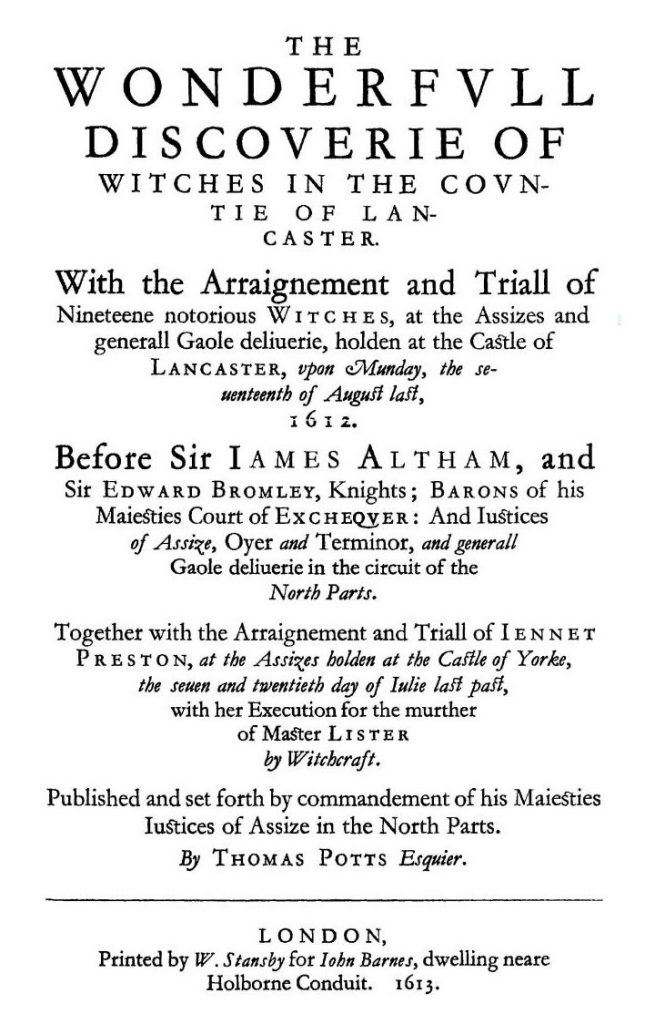 After the Reformation, these old Catholic rites were outlawed, resulting in one of the longest struggles waged by Protestant reformers against any of the traditional ecclesiastical rituals. Lay people stubbornly continued to hold vigils for their dead—a rite that could be performed without a priest and in cover of darkness. Until the early 19th century in the Lancashire parish of Whalley, some families still gathered at midnight upon All Hallows Eve. One person held a large bunch of burning straw on a pitchfork while the others knelt in a circle and prayed for their beloved dead until the flames burned out.
After the Reformation, these old Catholic rites were outlawed, resulting in one of the longest struggles waged by Protestant reformers against any of the traditional ecclesiastical rituals. Lay people stubbornly continued to hold vigils for their dead—a rite that could be performed without a priest and in cover of darkness. Until the early 19th century in the Lancashire parish of Whalley, some families still gathered at midnight upon All Hallows Eve. One person held a large bunch of burning straw on a pitchfork while the others knelt in a circle and prayed for their beloved dead until the flames burned out.
Long after the Reformation, people persisted in giving round oatcakes, called Soul-Mass Cakes to soulers, the poor who went door to door singing Souling Songs as they begged for alms on the Feast of All Souls, November 2. Each cake eaten represented a soul released from purgatory, a mystical communion with the dead.
In Glossographia, published in 1674, Thomas Blount writes:
All Souls Day, November 2d: the custom of Soul Mass cakes, which are a kind of oat cakes, that some of the richer sorts in Lancashire and Herefordshire (among the Papists there) use still to give the poor upon this day; and they, in retribution of their charity, hold themselves obliged to say this old couplet:
God have your soul, Bones and all.
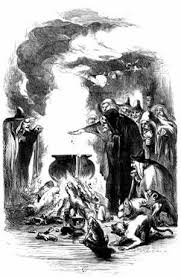 Other All Hallows folk rituals invoked the power of fire to purify and ward. In the Fylde district of Lancashire, farmers circled their fields with burning straw on the point of a fork to protect the coming crop from noxious weeds.
Other All Hallows folk rituals invoked the power of fire to purify and ward. In the Fylde district of Lancashire, farmers circled their fields with burning straw on the point of a fork to protect the coming crop from noxious weeds.
Fire was used to protect people from perceived evil spirits active on this night. At Longridge Fell in Lancashire, very close to Pendle Hill, the custom of ‘lating’ or hindering witches endured until the early 19th century. On All Hallows Eve, people walked up hillsides between 11 pm and midnight. Each person carried a lighted candle and if the flame went out, it was taken as a sign that an attack by a witch was impending and that the appropriate charms must be employed to protect oneself.
What do these old traditions mean to us today?
All Hallows is not just a date on the calendar, but the entire tide, or season, in which we celebrate ancestral memory and commemorate our dead. This is also the season of storytelling, of re-membering the past. The veil between the seen and unseen grows thin and we may dream true.
Wishing a blessed All Hallows Tide to all!
Excerpt from Daughters of the Witching Hill
“At Hallowtide, Liza insisted on walking up Blacko Hill, as we’d always done, for our midnight vigil on the Eve of All Saints. Under cover of darkness we crept forth with me carrying the lantern to light our way and John following with a pitchfork crowned in a great bundle of straw.
Once we reached the hilltop, after a furtive look round to make sure no one else was about, John lit the straw with the lantern flame so that the straw atop the pitchfork blazed like a torch. With him to hold the fork upright and keep an eye out for intruders, Liza and I knelt to pray for our dead. In the old days, we’d held this vigil in the church, the whole parish praying together, the darkened chapel bright as day with the many candles glowing on the saints’ altars. Now we were left to do this in secret, stealing away like criminals in the night, as though it were something shameful to hail our deceased. I prayed for my mam and grand-dad, calling out to their souls till I felt them both step through the veil to bring me comfort.
In my heart of hearts, I did not believe my loved ones were in purgatory waiting, by and by, to be let into heaven. There was no air of suffering or torment about them, only the joy of reunion. My mam, young and pretty, worked in her herb garden. She hummed a lilting tune whilst her earth-stained fingers pointed out to me the plants I must use to ease Liza’s birth pangs. Grand-Dad whispered his old charms to bless me and Liza and John.
A long spell I knelt there, held in the embrace of my beloved dead, till the straw on the pitchfork burned itself out, falling in embers and ash to the ground. Our John helped my pregnant daughter to her feet, then we made our way home through the night that no longer seemed so dark.”
 Mary Sharratt is an American writer living in the Pendle region of Lancashire, Northern England. Her acclaimed novel of the Pendle Witches, Daughters of the Witching Hill, is out in paperback and ebook. Illuminations, her award-winning novel exploring the life of visionary abbess and polymath, Hildegard von Bingen, is now out in trade paperback and ebook.
Mary Sharratt is an American writer living in the Pendle region of Lancashire, Northern England. Her acclaimed novel of the Pendle Witches, Daughters of the Witching Hill, is out in paperback and ebook. Illuminations, her award-winning novel exploring the life of visionary abbess and polymath, Hildegard von Bingen, is now out in trade paperback and ebook.
Visit Mary’s website: www.marysharratt.com.
Click here for: Soul Cake Recipe
Source: Ronald Hutton, The Stations of the Sun: A History of the Ritual Year in Britain
Thank you Mary for sharing with us, Happy All Hallows in Old Lancashire!

